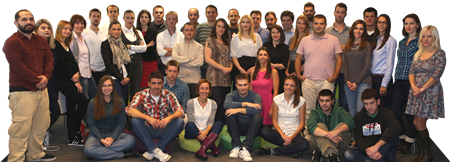CYPRUS, From the Stone Age to the Romans
| Cena: |
| Želi ovaj predmet: | 4 |
| Stanje: | Polovan bez oštećenja |
| Garancija: | Ne |
| Isporuka: | Pošta CC paket (Pošta) DExpress Post Express Lično preuzimanje |
| Plaćanje: | Tekući račun (pre slanja) PostNet (pre slanja) Ostalo (pre slanja) Lično |
| Grad: |
Beograd-Batajnica, Beograd-Zemun |
ISBN: Ostalo
Godina izdanja: 1982
Jezik: Engleski
Autor: Strani
Ancient Peoples and Places
CYPRUS
From the Stone Age to the Romans
Autor: Vassos Karageorghis
Izdavač: Thames and Hudson Inc., New York 1982.
Tvrd povez, zaštitni omot, 207 stranica, 25x17cm
Tekst na engleskom jeziku
Dobro očuvano (stranice posivele po ivici, vidite foto)
- Kipar, Od kamenog doba do Rimljana,
sa 137 ilustracija
- Na omotu statueta od terakote iz 5.-7. veka pre nove ere, deo velike kolekcije uključujući neke od životinja i mitskih zveri pronađenih u svetilištu posvećenom bogu plodnosti i rata u Ayia Irini
- `The island of Cyprus lies at the crossroads between the civilizations of the ancient world. and from earliest times attracted a rich variety of cultures to its shores. Greeks and Persians Assyrians and Egyptians, Phoenicians and Romans, all vied at some time for possession of its trading centers and copper mines.
Dr. Vassos Karageorghis, who for the last 20 years has been Director of Antiquities in Cyprus, is clearly in a unique position to write this important survey of the history, culture and everyday life of each period of Cyprus past. He describes how the foundations of a characteristic Cypriot culture were laid by the first settlers who arrived from Anatolia around 7000 Bc. bringing their own religion, tools. ornaments, farming practices and architecture to the island. Later waves followed these, and he shows how, from the 2nd millennium BC. settlements acquired defenses in response to internal frictions and foreign threats. The importance of copper demonstrated in the very name of the island prompted the founding of new harbor-cities that attracted the population back to coastal areas. Within this framework we are shown how archaeology reflects the intermittent struggles between the east and the west of the island for control of the copper trade: the burgeoning of regional capitals in the wake of this fragmentation, and events recorded by Classical authors that are linked with some of the island`s monumental tombs. Lastly, the author outlines the complex maneuvring which culminated in the Roman takeover and the coming of Christianity.
The breadth and immense wealth of detail in this book make it essential reading for the visitor to Cyprus, as well as for the student of its archaeology.`
g31
Uz kupljenu knjigu,
poklon STUDENTSKI BLOK! (:
`Čuveni `Eurokrem blok` promenio je ime u `Studentski blok`,
a sva sredstva od prodaje biće usmerena kao pomoć studentima.`
Ako uplatu vršite POSTNETom, prezivam se Tomasović (često se pogrešno napiše)
Ako je naznačena Besplatna dostava, samo za Republiku Srbiju, Preporučena tiskovina
Za slanje knjiga van teritorije Republike Srbije, pre kupovine obavezan dogovor preko kupindo poruka
- Besplatna dostava biciklom u letnjem periodu:
Batajnica, Nova Pazova (centar), Zemun, Novi Beograd, Beograd (centar), ...
- za dalje destinacije, dogovor
Predmet: 79718557















